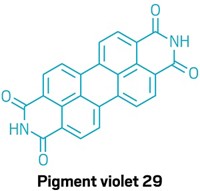Advertisement
Grab your lab coat. Let's get started
Welcome!
Welcome!
Create an account below to get 6 C&EN articles per month, receive newsletters and more - all free.
It seems this is your first time logging in online. Please enter the following information to continue.
As an ACS member you automatically get access to this site. All we need is few more details to create your reading experience.
Not you? Sign in with a different account.
Not you? Sign in with a different account.
ERROR 1
ERROR 1
ERROR 2
ERROR 2
ERROR 2
ERROR 2
ERROR 2
Password and Confirm password must match.
If you have an ACS member number, please enter it here so we can link this account to your membership. (optional)
ERROR 2
ACS values your privacy. By submitting your information, you are gaining access to C&EN and subscribing to our weekly newsletter. We use the information you provide to make your reading experience better, and we will never sell your data to third party members.
Chemical Regulation
US EPA finalizes list of 20 low-priority chemicals
Substances will not undergo further evaluation of health and safety risks at this time
by Britt E. Erickson
February 21, 2020
The US Environmental Protection Agency has finalized its initial list of low-priority chemicals that will not undergo further risk evaluation under the Toxic Substances Control Act (TSCA). The 20 substances are the same ones the agency proposed to designate as low priority in March 2019.
Despite giving the public two opportunities to comment, the EPA made the list of low-priority chemicals official on Feb. 20 without addressing the concerns raised by many environmental groups and academic researchers. They are likely to challenge the EPA’s designations in court.
To designate a substance as low priority under TSCA, the EPA must determine that the chemical does not present unreasonable risks to human health or the environment. To do so, the agency must have sufficient toxicity information about the chemical.
But in many cases, the EPA designated chemicals as low hazard without such information, a coalition of academic researchers, scientists, and clinicians say in comments sent to the EPA. The group notes that the EPA lacks data on developmental toxicity, reproductive toxicity, carcinogenicity, and endocrine activity for the 20 substances.
The EPA also did not consider physical hazards such as flammability when evaluating the chemicals, the Environmental Defense Fund (EDF), an environmental advocacy group, says in comments submitted to the EPA. Nor did the agency adequately analyze storage of the chemicals near sources of drinking water, EDF says. Such information could have helped regulators prevent a 2014 leak of a substance lacking toxicity data from a storage tank into the public water of Charleston, West Virginia.
All of the 20 low-priority chemicals are on the EPA’s Safer Choice Ingredient List (SCIL)—a list of chemicals that the EPA has determined are safer alternatives to other substances used in consumer products, such as cleaning products. Those chemicals are safer than their alternatives but not necessarily safe for all uses, EDF says in its comments submitted to the EPA. Although the list is a good starting point for identifying potential low-priority chemicals, “the presence of a chemical on SCIL alone is not sufficient for designating it as low priority,” EDF says. TSCA requires the EPA to consider all conditions of use of a chemical, while the SCIL criteria require the agency to evaluate a narrow set of uses, such as an ingredient in a cleaning product.
The EPA did not address these concerns from academic researchers and environmental groups when it finalized the list of 20 low-priority chemicals. Instead, the agency adopted the position of the chemical industry. In comments submitted to the EPA, the American Chemistry Council, which represents chemical manufacturers, states “low priority designation does not require a formal regulatory finding of ‘low or no risk.’ ” The group argues that prioritization is a “risk-based screening process” to determine whether substances should be evaluated or whether risk evaluation is not warranted at the time. “EPA may later revise a low-priority designation, if warranted, based on reasonably available information,” ACC says.




Join the conversation
Contact the reporter
Submit a Letter to the Editor for publication
Engage with us on Twitter